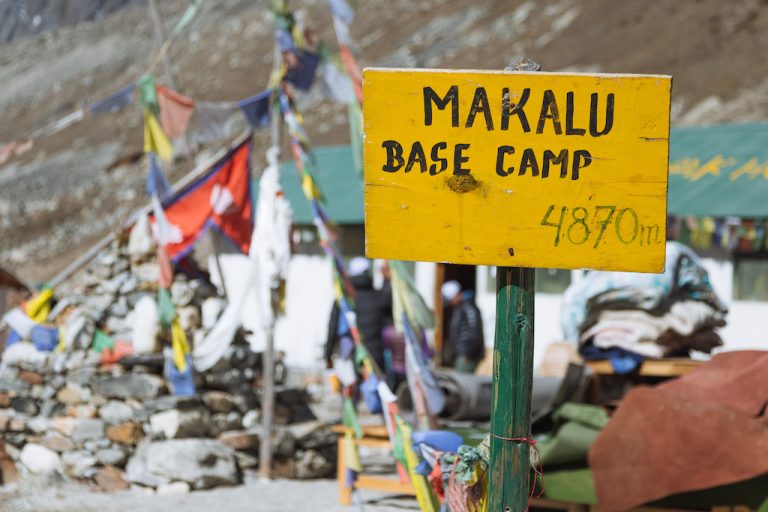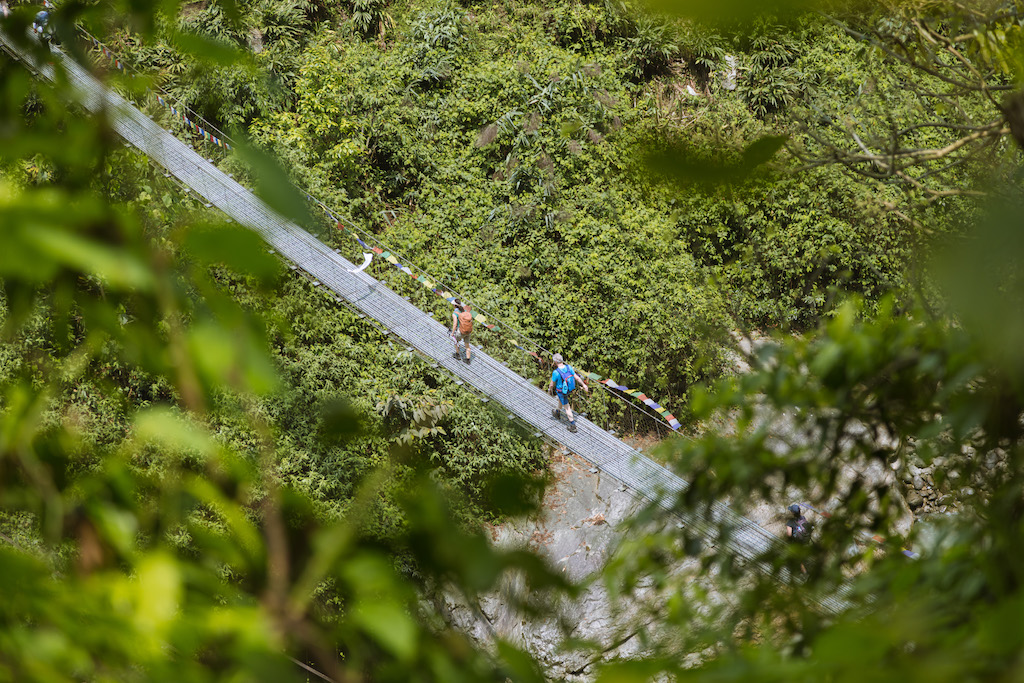Words and images: Neil Irwin
Makalu. Does the name ring a bell? Perhaps not if you don’t spend a lot of your time fantasising about 8000ers. It’s not only one of the 14 mountains in the world above 8000m, but it’s the 5th highest to be exact, standing at 8481 metres. Everest (8848m) may be synonymous for Nepal when it comes to both trekking and summiting, but perhaps Makalu should also be on your radar if you want to see what the country can really offer. From lush green jungle-like sections to rugged mountain scenery, and a hint of danger whilst traversing rock falls off the beaten path, the Makalu Base Camp Trek becomes a worthy opponent to Everest when it comes to picking your Himalayan adventure.
Nepal is a gorgeous country. The people, the landscape, you can’t help but fall in love with it. The last time I visited was actually to hike the Everest Base Camp Trek some nine years ago, and having had a taste of the experience that the country can offer, I’d been yearning to head back. The problem being that I needed to find the right reason to return. So, when I saw a post from someone I knew pop up on social media advertising the idea of going on a private trek that not many others tourists do, my interest was piqued. This is my type of trip. To go where few people go.
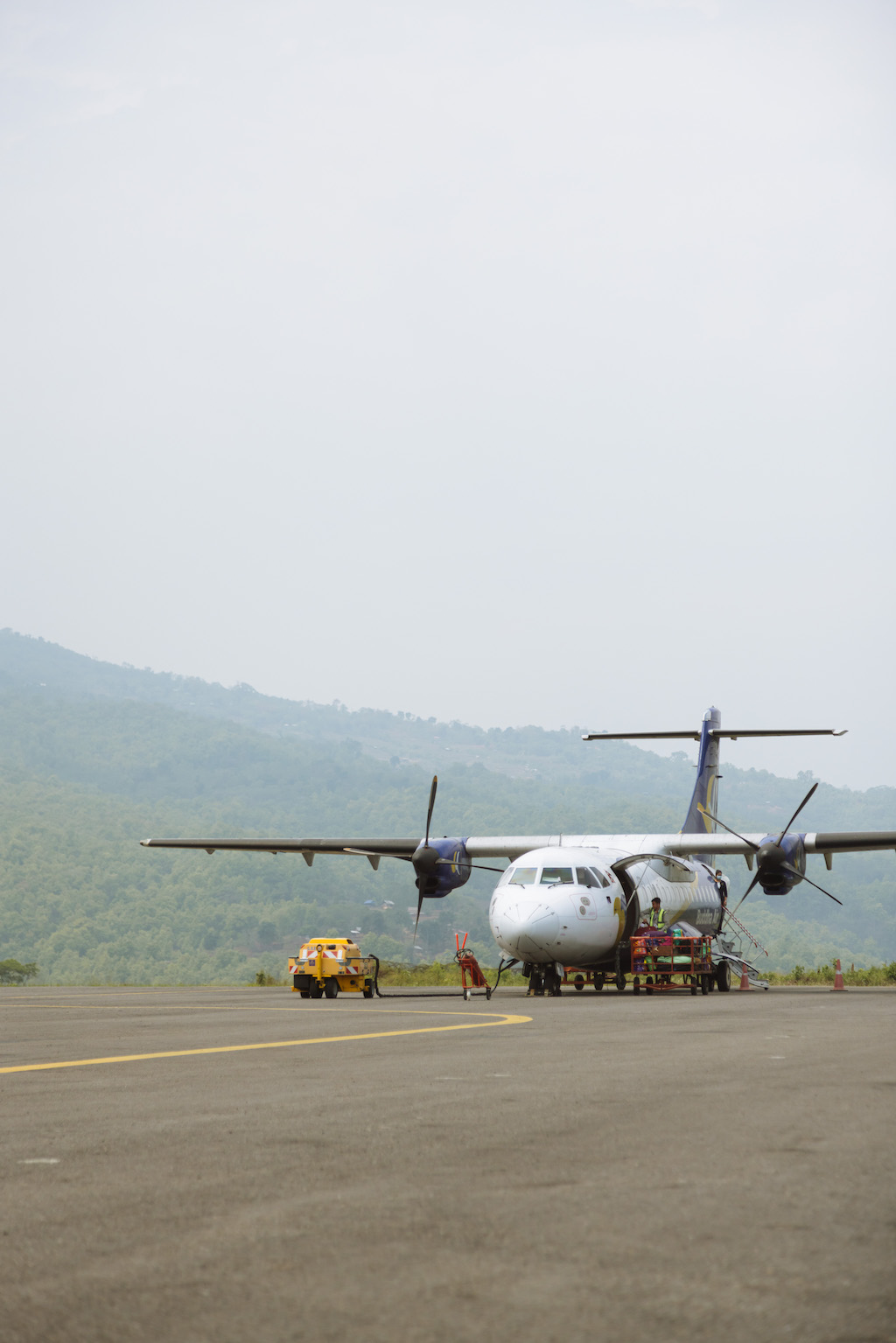
Planes, Trains and Automobiles
Meeting everyone at the hotel before the trek can be quite unnerving, but we all shared a glimmer of connection by knowing the organiser of the trip. Turns out this was no simple trip either. This was unique – we were a group of about 20 which is pretty large in comparison to the normal 12 or so. Logistically, we soon found out, this was quite an undertaking.
Our flight from Kathmandu to Tumlingtar took roughly 40 minutes. The start line at a town called Num however was another four to five hours 4×4 drive away. Three jeep-like vehicles rocked up, all in varying conditions. Balding tyres, rugged but rudimentary suspension; you could tell they’d had a laborious life. Loaded up with our personal gear and six or seven people per jeep it got a little cramped for such an epic journey ahead. There are no tarmacked roads out here. By the time we set off from the airport, it was already late afternoon, so we knew it wouldn’t be until after nightfall that we’d get to camp. The mood? Joyous and jubilant with the novelty of this drive, which soon wore off as the incessant shakes and bumps began to take their toll. An overturned lorry along the route certainly heightened the excitement in a cautious way. These roads aren’t to be messed with, if you can call them roads at all.
It wasn’t until the morning after that we saw the scale of the trip. More than ten brand new bright yellow four season two-man tents with foam mattresses were stood to attention. I certainly wasn’t expecting this kind of luxury! Not to mention the two assistant guides that came round each morning providing tea and coffee to our tent doors as well as some warm water to have a wash with. I was prepared for much less – to be living in my own filth for two plus weeks wondering when I’ll next be able to clean my pits. Not to mention the mess tent that was fully equipped with tables and stools that we’d be dining in.
Num, as it turns out, is the base for a helicopter that ferries kit up to Makalu Base Camp as various expeditions ready themselves for the summit. Trekkers are the only ones that seem to come this way. Mountaineers would normally acclimatise somewhere else and fly in to base camp as the trek starts at 1,500m, which is around the same height as Kathmandu. This is somewhat of a contrast to Everest where trekkers and climbers would normally hike in on the same route. No yak trains here. Instead, it’s all fields of varying crops tended to by their owners in 30 degree heat. We were getting a sweat on before it reached midday.
Mountains in Bloom
Day two was probably one of the most arduous of the entire trek, as we had to descend from Num to the valley floor, cross a river, then head back up the other side in searing heat. No one said it would be easy. I’d trained to get my legs in some form of shape, but after an entire day of steps both up and down, the group and I were happy to reach camp.
Conditions were certainly fertile below 3000 metres. Rhododendrons were in full bloom surrounding the paths with pinks, reds and purples and many variations in between, not forgetting towering trees and bushes. The views, albeit hazy, were still pretty stunning when the mountain tops could be seen. Nepal may be known for its rocky mountainous terrain, but it’s a country with other environments and eco systems as well. I can’t say anyone had warned me about the leeches that were waving around like blood thirsty little aliens either. They are silent little pests that, once latched on, are hard get off. You don’t even feel them bite. One managed to get me in camp on the inside of my second toe.
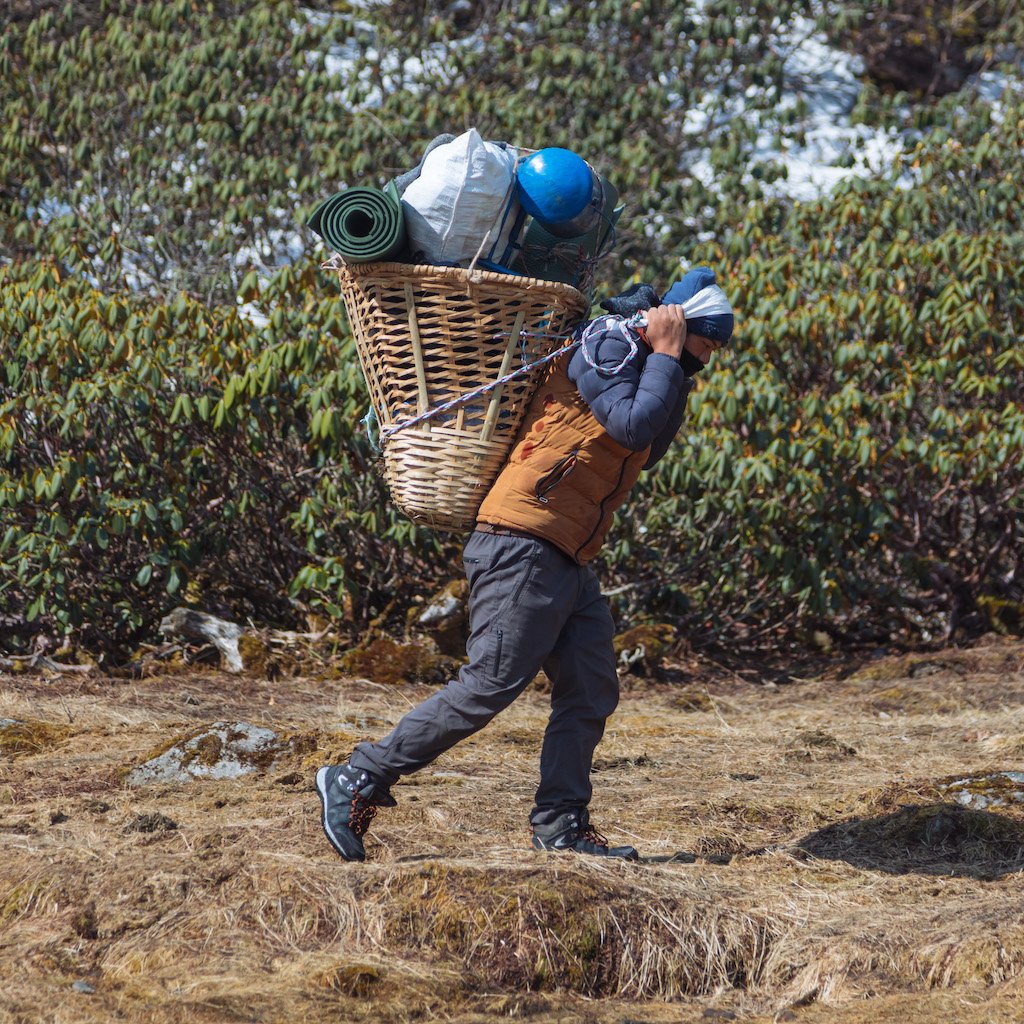
Unsung Heroes
A section of the main valley heading to Makalu, near the Khorlange Forest, definitely felt like a bit of an obstacle course. Boulders and rocks were strewn everywhere due to constant landslides, we even had to bypass or go around little sections because the ground simply wasn’t there. This certainly made the route more interesting, not to mention walking along and seeing jagged peaks jutting out the side of the mountains that definitely didn’t seem earth-like. Yet there was always something to look at and admire. Flowers, plants, trees, and even local fixtures. There are simply no roads around here. Everything has to either be hiked or helicoptered in.
Our porters were definitely the unsung heroes. They carried everything. I mean everything. Toilets, tents, tables, not to mention our bags. At its peak, there were some 50 people within the support crew. They would wait patiently for us to deliver our bags, wrap them up tightly with nylon rope before slinging them on their heads. Simple straps across their forehead is all that they used. Two bags at a time, along with sleeping mats; they were carrying easily 30kgs. No wonder we were told to pack as light as possible. Very few of them spoke English so we did what we could to try and communicate and have a laugh. On occasions we would catch up with some as they took a break on the paths before they would hurry off again into the distance. These guys had legs of steel.
The cook team were also something of a different breed. They’d pack up after we’d eaten, leave before us, fully laden up with food and stoves, set up lunch at a specified location, cook for us and themselves, and do it all again to get to camp. If they weren’t able to leave before us, they’d undoubtedly overtake us along the route. We were eating an eclectic mix of carbs with carbs. It wouldn’t be uncommon to devour chips with spaghetti for instance, but we didn’t mind. We needed the fuel. Garlic soup (garlic is meant to help with the symptoms of altitude), a main meal and a bowl of warm fruit with almost unlimited tea was the norm. Of course, not forgetting the occasional Nepalese staple of Dahl Baht. There were certainly plenty of calories to energise the legs.
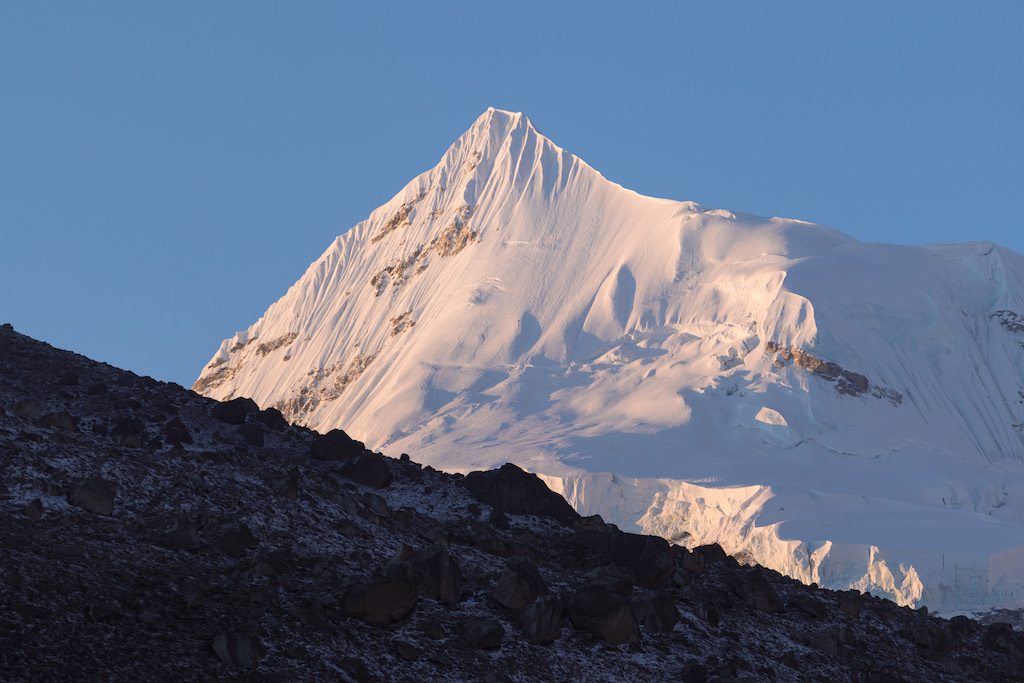
Waiting for Sun
Base Camp itself is situated in a flattened, segregated area near to a glacial lake. Turns out Makalu has a few different base camps depending on which one you want to head to. At a height of 4870m, the main camp had a handful of buildings and a few other tents besides our own dotted around for other expeditions already up on the mountain. Ours, neatly lined up at the foot, were sitting there ready for us to arrive. Home away from home you could say. It was a great sight to see after two weeks of walking. Makalu however, was engulfed with a thick layer of cloud, so for a while I could only imagine what it looked like.
On our ‘rest’ day, we attempted to reach a nearby ridgeline a few hundred metres above us that, on a clear day, would showcase Everest and its surrounding peaks. This was not to be, but that’s part and parcel of being in the mountains. They have their own weather systems that are pretty hard to predict. The cloud would occasionally break revealing little glimpses and snippets of rockface which I’d watch intensely before they’d vanish as quickly as they’d appear.
Thankfully for us though, on the morning of the day to depart Base Camp, the weather gods were kind and presented Makalu in its full glory as the sun slowly lit up its eastern side before eventually dazzling the entire valley in its rays. I couldn’t help but marvel at its magnitude and beauty. I’m a mountain lover after all. As it turns out, Makalu, just like many other Himalayan peaks, is mainly visible in the mornings before the clouds roll in and encompass the valley. Later on, for the lucky few who were willing to pay top dollar, a helicopter swooped in to ferry them back to Kathmandu enabling them to take a birds eye view of not only Makalu and Everest, but of the surrounding Himalayas as well. For the rest of us, it was time to take in the sights one last time before making our winding way back to Tumlingtar.



